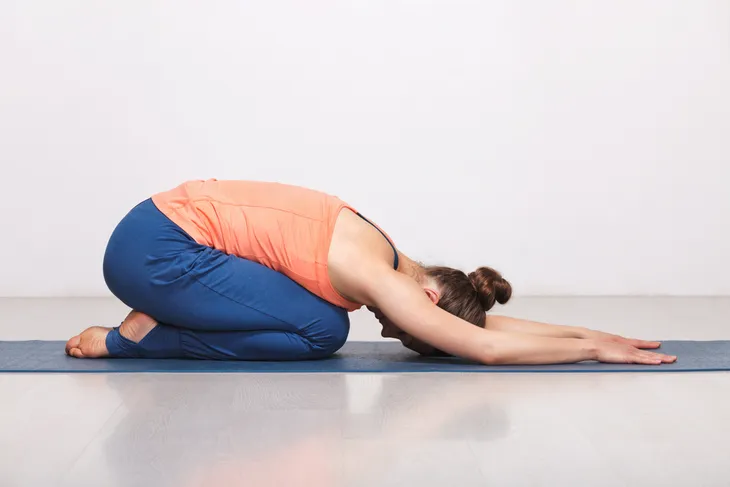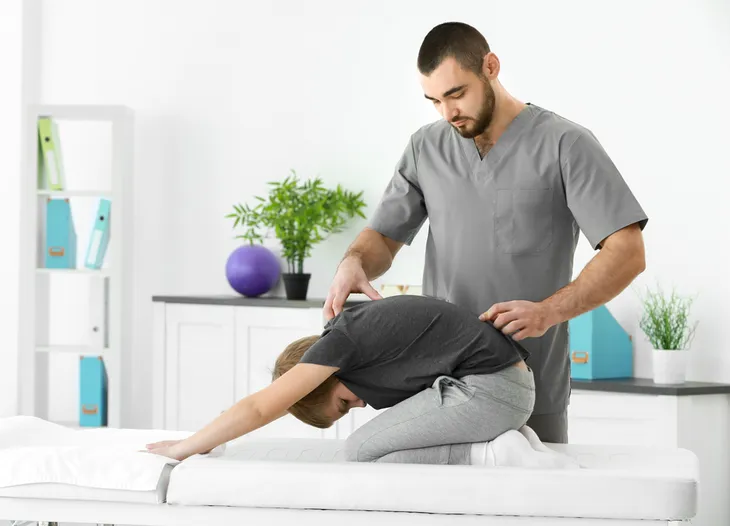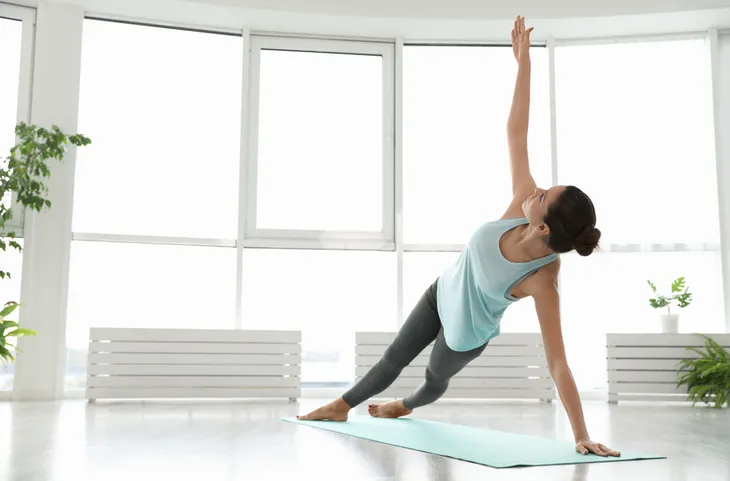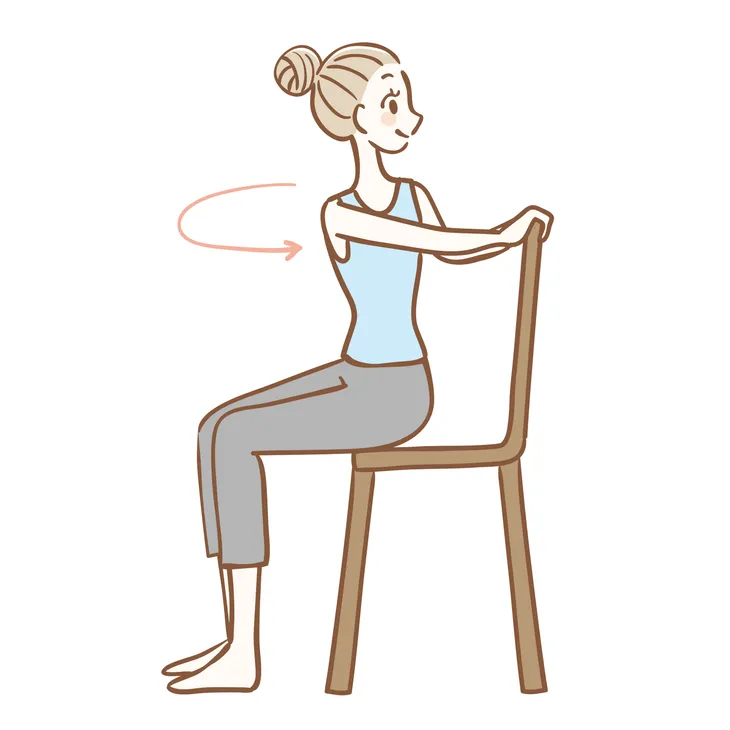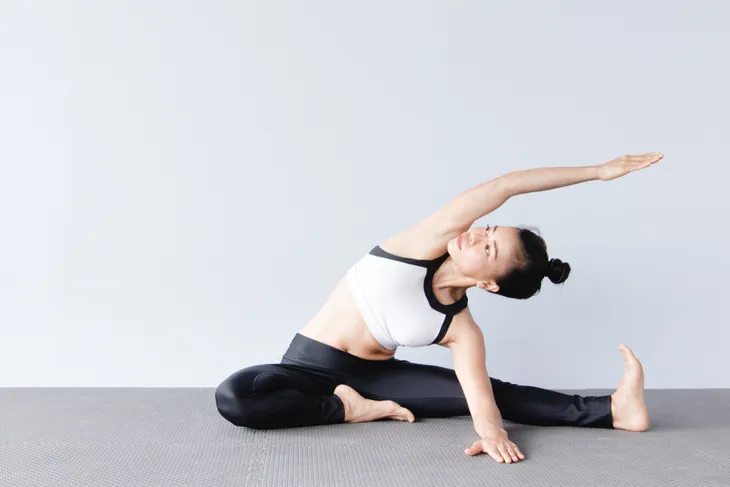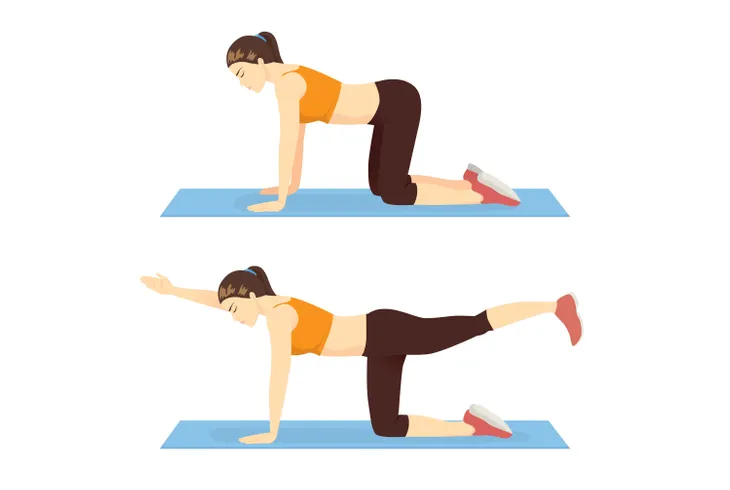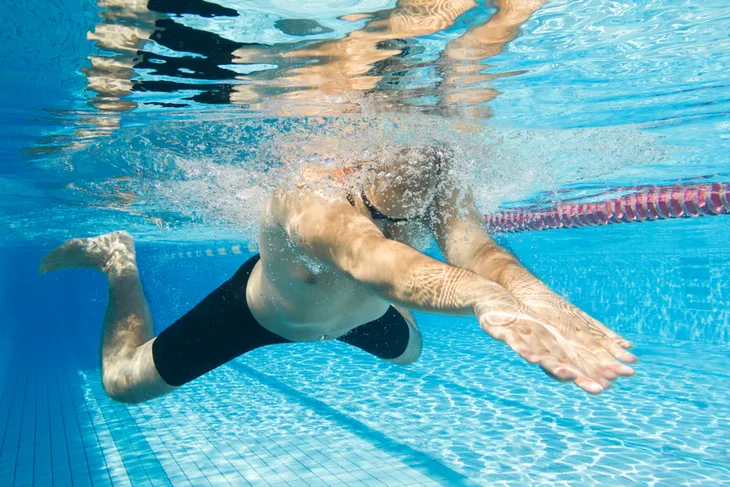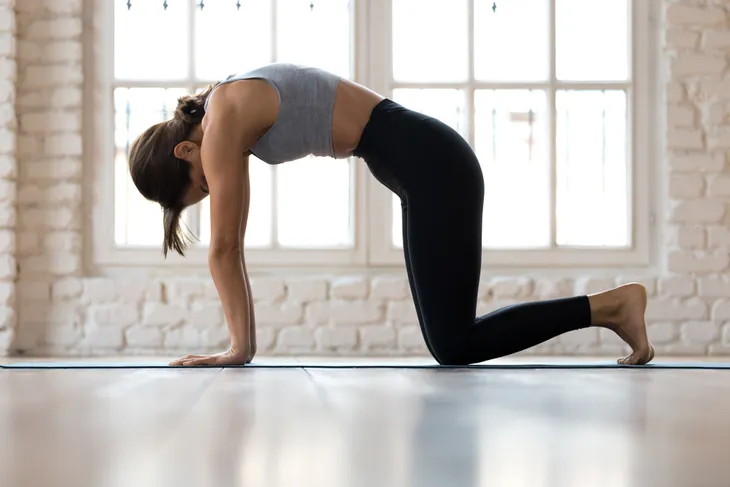Scoliosis is a condition when you have an abnormal sideways curvature of your spine. If you’re looking at someone with scoliosis, you’ll notice that their shoulder blades are shifted more prominently to one side of the body and are elevated higher than the other side.
There are many causes of scoliosis but for most people, they’re either be born with scoliosis or develop it as they age. This condition can result in lung and heart problems, back pain, decreased spinal mobility and a noticeable change in appearance if it progresses. Regardless of your situation, specific exercises can help you manage your scoliosis to live a more normal life and to prevent its progression.
To help combat the symptoms of scoliosis and better manage this condition, here are 8 exercises to try…
Child’s Pose
Maintaining the flexibility of the spine is key when managing your scoliosis. By completing the child’s pose, you are actively stretching out the latissimus dorsi and erector spinae muscles which attach to your spine and help maintain optimal alignment.
By ensuring normal flexibility of these muscles, you’ll be able to free up your upper back and avoid a decrease in spinal mobility and pain. Make sure to sit deeply into this stretch and complete it multiple times during the day for optimal effects.
Side Lean to Help Correct the Spine
Depending on which way your spine is curving, by placing your body weight in a position that encourages the spine in the opposite direction can be helpful in stopping the progression of your scoliosis. Kneeling on the floor, place the arm opposite of your scoliosis curve and brace your elbow against a wall. Slowly push your hips towards the wall and hold.
Side Plank
Building good core strength is essential for the long-term management of scoliosis. Having a strong core can help keep your spine in better alignment. Side planks are a great way to build core strength and they also have the added benefit of a helping to correct the abnormal curvature if you only complete them on the opposite side of your scoliosis curve.
Upper Back Rotations with Deep Breathing
Abnormal curvature of the spine can place a lot of stress on your lungs depending on the severity of the scoliosis. By completing a rotational upper back stretch with deep breathing, you help to increase spine flexibility and expand the lungs to improve their function.
Simply sit on a chair, cross your hands across your shoulders and then rotate all the way to left. When you can’t turn any further, take 5 deep breaths in and out and then do the same on the opposite side.
Seated Hamstring Stretch with Side Bend
This stretch does a great job of stretching out the upper back along with the muscles that attach into the spine. Completing this stretch daily will help to maintain flexibility in the spine and decrease pain associated with scoliosis. Typically, someone with a scoliosis will feel as if the muscles on the side of the scoliosis are much tighter and less flexible than the opposite side.
When you’re completing this stretch, be sure to really lean into the side where you have restricted movement to get the most bang for your buck.
Bird Dogs
Bird dogs are a fantastic exercise that promote spinal flexibility and core strength. When completing this exercise, you’re engaging the muscle on either the right or left side of the top half of the upper spine as well as the muscles on the opposite side of the lower spine. This creates torsion of the spine helping to promote better alignment and strength of the muscles attaching into it.
Simply contract your core muscles as you extend one leg and one arm into the air and then complete for the desired amount of reps.
Swimming
Swimming is a great form of exercise that helps to strengthen lung capacity, heart function and is also a great way to strengthen and tone the muscles surrounding your spine. Using water as resistance, you’re able to get a fantastic workout and help manage your scoliosis at the same time.
Freestyle and breaststroke will give you the most bang for your buck as you’re helping to strengthen the rhomboids, lats and abdominals, all of which help to keep the spine in optimal alignment.
Cat and Cow Stretch
This exercise is great for improving pelvic mobility, upper spine mobility and it helps to keep the muscles that attach into the spine mobile. Simply kneel on a yoga mat and rotate your tailbone towards the floor promoting posterior pelvic tilting and the elongation of the muscles in the middle of your back. After holding this position for a few seconds, rotate your tailbone towards the ceiling as your upper back dips towards the floor.

